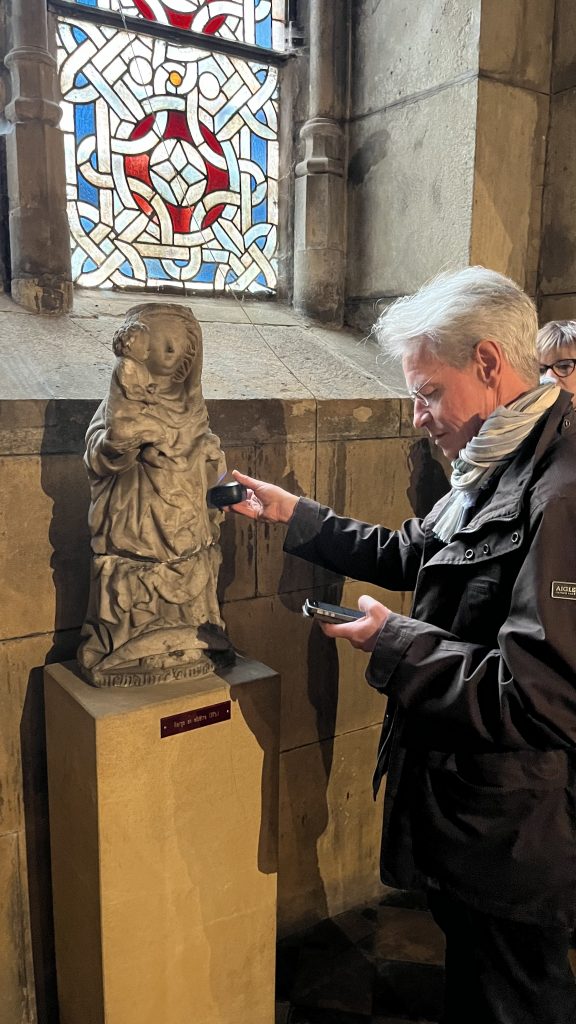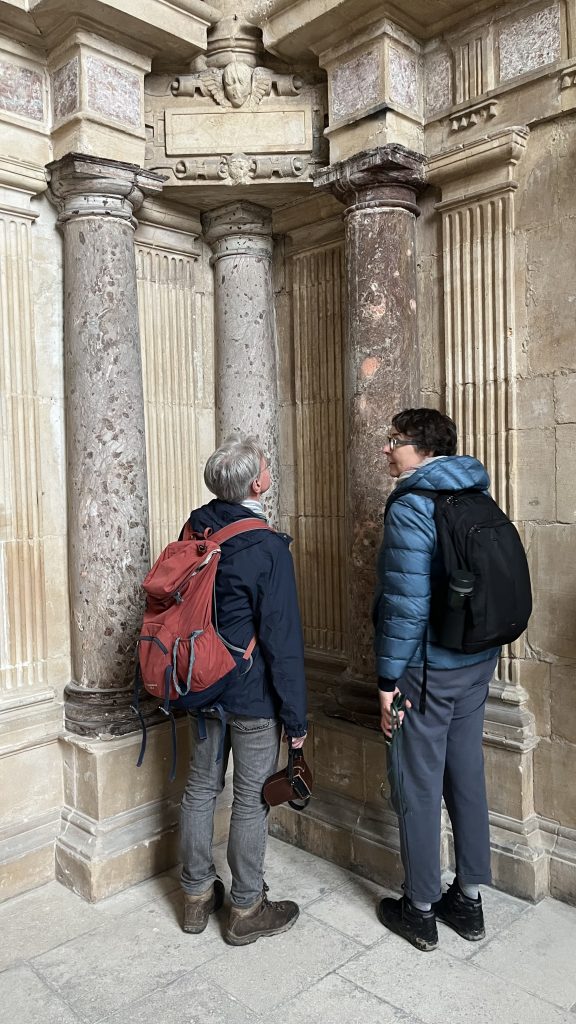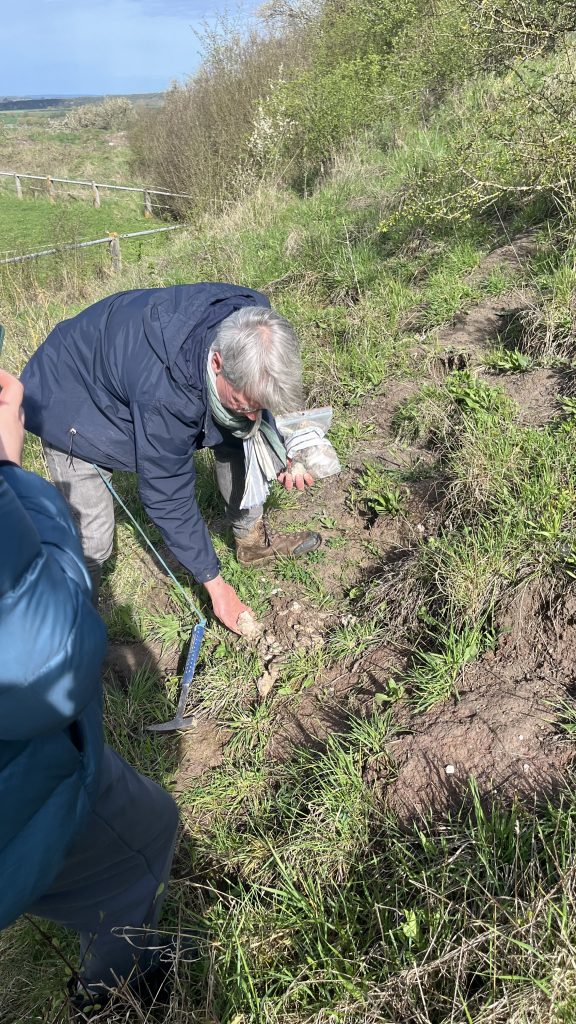From 2 to 8 April 2024, researchers from the Materi-A-Net team (Aleksandra Lipińska, Wolfram Kloppmann, Undine Dömling) went on a research trip to Metz and the surrounding area. The purpose of the research trip was to examine various alabaster sculptures and to sample some of them. The starting point for the ‘mission’ were sources that mentioned alabaster quarries in the Metz area, which were to be found during the research trip.
On the first day, we had an appointment in Metz Cathedral to take a closer look at a crescent moon Madonna and Child. Using a non-invasive infrared method, we were able to determine that the figure was actually made of alabaster. In the afternoon, we went on to the Musée de la Cour d’Or, where we were also able to examine some alabaster sculptures.
One particularly interesting alabaster work was a relief that once stood above the entrance to a house in Metz. This can be clearly recognised by the coat of arms depicted on the relief. A small sample was taken from the relief to determine where this Metz family sourced the alabaster for this shield. We then went to the museum’s depot to take samples of other alabaster figures and create 3D models of some of them. Of particular interest was a bust of Anicius Foës, as there is a source for this sculpture that mentions where the alabaster came from.
The second day was reserved for searching for the quarries. To do this, we travelled to the area around Metz. By compiling geographical maps, which have mapped stone formations and thus indicate in which levels alabaster can occur, working with historical sources that mention where the alabaster was extracted and satellite images (LiDAR) that show man-made structures in the environment, the approximate locations of the historical quarries could be determined. All the quarries on the day were localised and samples were taken.
On the last day of the research trip, we visited the episcopal city of Toul, which ended up being an unexpected highlight, as we were able to visit two episcopal funeral chapels in the cathedral, both of which are clad in alabaster panels. When admiring the alabaster panelling of the two chapels, we were particularly struck by the variety of colours and the size of the monolithic alabaster columns. To round off the trip, we also visited St Gengoult, a former collegiate church in Toul, where we discovered a beautifully crafted alabaster Madonna figure on the high altar.
It remains to be seen whether the samples we took on the trip will match the isotopic fingerprint of the sculptures that have already been sampled as part of the research project.




